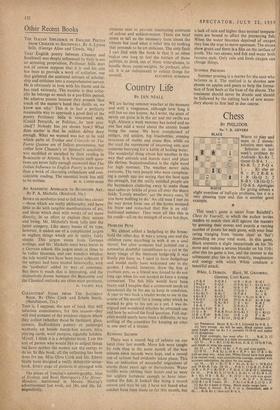AN AESTHETIC APPROACH TO BYZANTINE ART.
BOOKS on aesthetics tend to fall into two classes —those which are really philosophy, and have little to do with tangible manifestations of art, and those which deal with works of art more directly, in an effort to explain their nature and being. Mr. Michelis's book falls into the latter category. Like many books of its type, however, it makes use of a complicated jargon to explain things which are in reality fairly simple. This jargon stems from German writings, and Mr. Michelis must have learnt in a German school. His jargon tends at times to be rather tiresome, and one wonders whether the tale would not have been more coherent if the subject had been treated historically, with the 'aesthetics' added by way of comment. But there is much that is interesting, and the distinctions drawn between the Byzantine and the Classical outlooks are often most pertinent.
D. TALBOT' RICE


















































 Previous page
Previous page